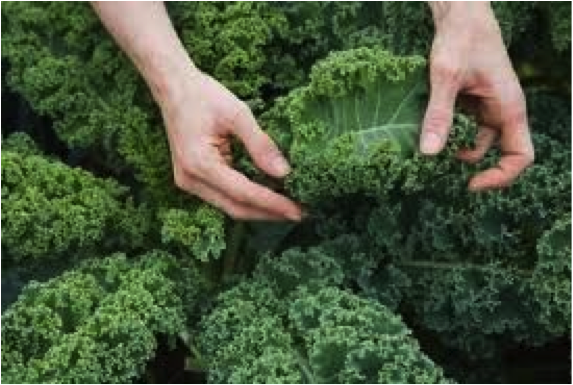Cooler temperatures and hints of rainfall have finally arrived. It’s fall, and my favorite time of year for gardening. While many folks are winding down their garden activities, I’m actually gearing up. This is the time to plant!
First, there’s planting the winter garden. After composting the remains of squash, tomatoes, and eggplant, I seed my small army of caster outfitted wine barrel planters with beets, spinach, kale, and chard. These are hearty veggies that do well in winter temperatures including light frost conditions. I’ve found that a light touch of frost can actually add sweetness to kale and chard.
Mobile garden. Wine barrel planter with casters.
Seeding in moveable containers gives me the flexibility to locate plantings closer to the house or other protected areas when nighttime temperatures below freezing are forecast. Having mobility also lets me locate the containers to take maximum advantage of the shorter winter daylight hours.
Kale.
To prepare the containers, I simply add 2 inches of well-cured high quality compost mixed with 25% (by volume) pelletized organic chicken manure to the top of each planter. Mixing this new material in with what you already have in the container isn’t necessary. I seed directly into the top-dressing, water, and let nature go from there.
Spinach.
Winter gardens make watering especially easy. I don’t! Well, usually don’t. Normal rainfall is typically sufficient unless we are experiencing an especially dry winter. In dry winters I will supplement containers with a drink from the hose, or from rainwater that I’ve collected. If you use a drip system to water your containers during the summer, now is the time to shut it off.
Iris bulb mass.
After getting the winter veggies started, I next tackle bulb planting. October and November are generally regarded as the months to get your bulbs in the ground if you want a wealth of color in the spring. I plant bulbs in containers as well as directly into the landscape. My preference is to have masses of one or two bulb varieties (tulips and irises) in the landscape that appear to just “pop up” in spring, and to use containers to spread out the period of bloom.
Bulb lasagna. Top with violas for instant color.
I spread out the bloom by mixing a variety of early, mid, and late season flowering bulbs in my containers. To achieve this I prepare the containers to resemble lasagna, stacking layers of different bulb varieties upon one another separated by a thin layer of planting mix supplemented with an organic bulb fertilizer. Be sure that each container drains well, and keep the bottom of each container up off the ground if possible. You don’t want excess moisture to be retained in the containers and cause your bulbs to rot. To give the containers “instant” color while waiting for the bulbs to emerge, I top each container with a mix of violas.
Violas top pot containing mixed spring bulbs.
Once I have the bulbs tucked in, I turn my attention to infill and replacement planting.
Infill is planting to close unplanned open spaces in the landscape after pruning and trimming. This usually involves taking transplants from thinned areas and finding them a new home where there’s a gap. I generally backfill with soil from each hole mixed with compost and a small amount of an organic starter fertilizer. My transplants are hand watered through the winter as needed. I don’t mess with soaker hose placement until the spring. I like to spread my gardening labor out. Besides, messing with the irrigation system is the least enjoyable of my garden chores, so delaying the task is fine by me.
In cases where plant material has died for one reason or another over the summer (and it always does), I take advantage of the comfortable fall weather to get replacements in the ground. Fall planting is easier on me, and on the replacement plants. Again, I mix compost with an organic starter fertilizer to the soil from each hole and take care to trim and loosen roots as needed before I backfill. As with the infill planting, replacement planting is watered by hand.
This is prime time for planting, so get out there and get your hands soiled. Do it now, because next month’s newsletter will be devoted to winterizing the garden, and you know what the means. Yup, all that garden “clean up” stuff like raking and mulching that you love to hate.
Happy planting!
The Dirt Dude








